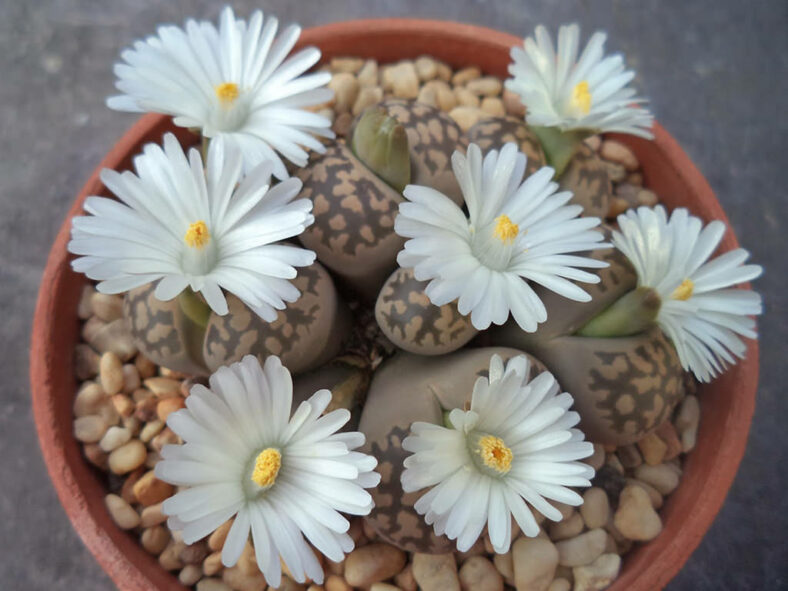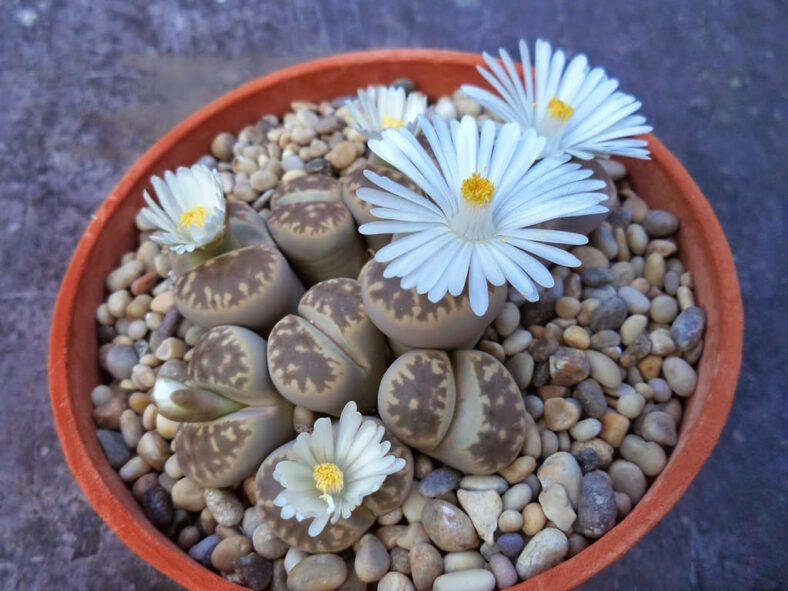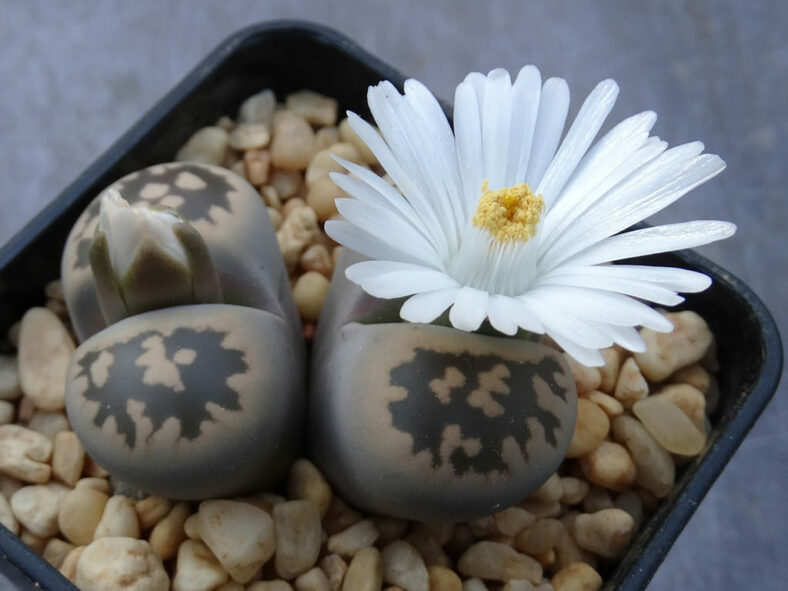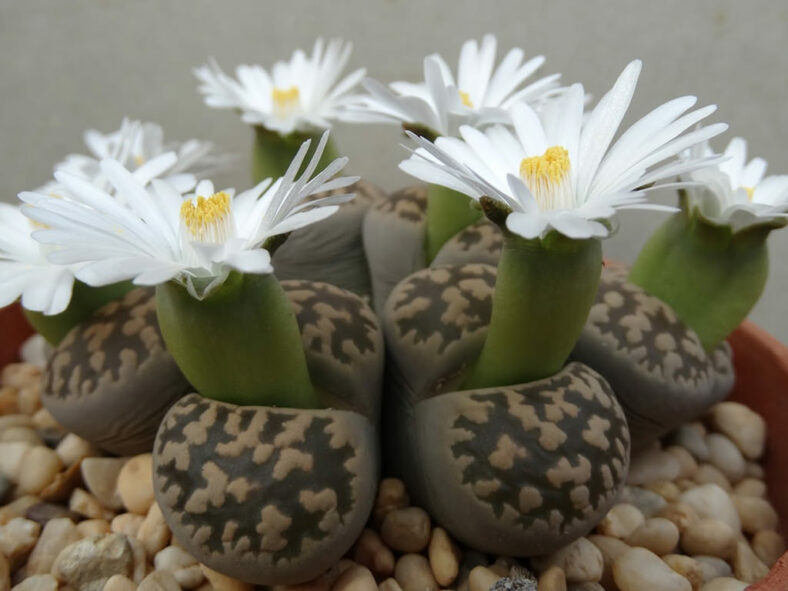Scientific Name
Lithops karasmontana subsp. bella (N.E.Br.) D.T.Cole
Synonym(s)
Lithops bella, Mesembryanthemum bellum
Scientific Classification
Family: Aizoaceae
Subfamily: Ruschioideae
Tribe: Ruschieae
Genus: Lithops
Etymology
The subspecific epithet "bella" (pronounced BEL-luh) means "beautiful, pretty" and refers to the beauty of this plant.
Origin
Lithops karasmontana subsp. bella is native to Namibia. It occurs in granite mountains in a narrow boomerang-shaped area from Witputs to Helmeringhausen.
Description
Lithops karasmontana subsp. bella is a dwarf succulent that forms a clump of paired, plump leaves fused in an inverted cone shape with a central fissure dividing them. The plant bodies can reach 2 inches (4 cm) in height. They have a kidney-shaped face that is flat to slightly convex, measuring up to 1.4 inches (3.5 cm) long and 1.1 inches (2.5 cm) wide at the fissure. The leaf-tip windows are large, dark greenish or brownish, and broken up by raised light yellow, pinkish-yellow, or light brownish-yellow islands.
In spring and summer, Lithops karasmontana subsp. bella produces scented, pure white flowers from the fissure between the leaves. The flowers can reach up to 1 inch (2.5 cm) in diameter. The fruits are capsules with 4 to 6 chambers and contain yellowish-brown seeds.

How to Grow and Care for Lithops karasmontana subsp. bella
Light: A sunny windowsill where the plant receives 4 to 5 hours of direct sunlight during the early part of the day and partial shade during the afternoon is the perfect spot. You may place the plant on the balcony or in the garden from spring to fall.
Soil: Lithops karasmontana subsp. bella thrives best in soil that will drain quickly. Use a commercial potting mix for succulents, or make your own.
Temperature: High temperatures are not a problem for this plant as long as there is plenty of fresh air, but it is not a cold-hardy succulent. It grows best in USDA Plant Hardiness Zones 10a to 11b, with average minimum winter temperatures ranging from 30 to 50 °F (-1.1 to 10 °C).
Watering: Since this plant has a specific yearly growth cycle, it is important to water only during certain stages, but it is also important to keep the soil dry at other stages of its growth. How often do you need to water Lithops karasmontana subsp. bella depends on how quickly the soil dries out. Stop watering during the winter to allow the old leaf pair to dry out and the new pair to develop.
Fertilizing: As long as you repot this plant every two years, it does not need fertilizer.
Repotting: Even if it can stay happy in the same pot for decades, once in a while, repot the plant to give it more space anytime during the growing season. However, the best time for repotting is the beginning of the growing season.
Propagation: Lithops karasmontana subsp. bella is most often started from seeds sown during the summer. However, if you have a multi-headed plant, it can also be easily propagated by division.
Learn more at How to Grow and Care for Lithops.
Toxicity of Lithops karasmontana subsp. bella
Lithops karasmontana subsp. bella is non-toxic and safe to have around children and pets.
Links
- Back to genus Lithops
- Succupedia: Browse succulents by Scientific Name, Common Name, Genus, Family, USDA Hardiness Zone, Origin, or cacti by Genus
Photo Gallery
Click on a photo to see a larger version.


